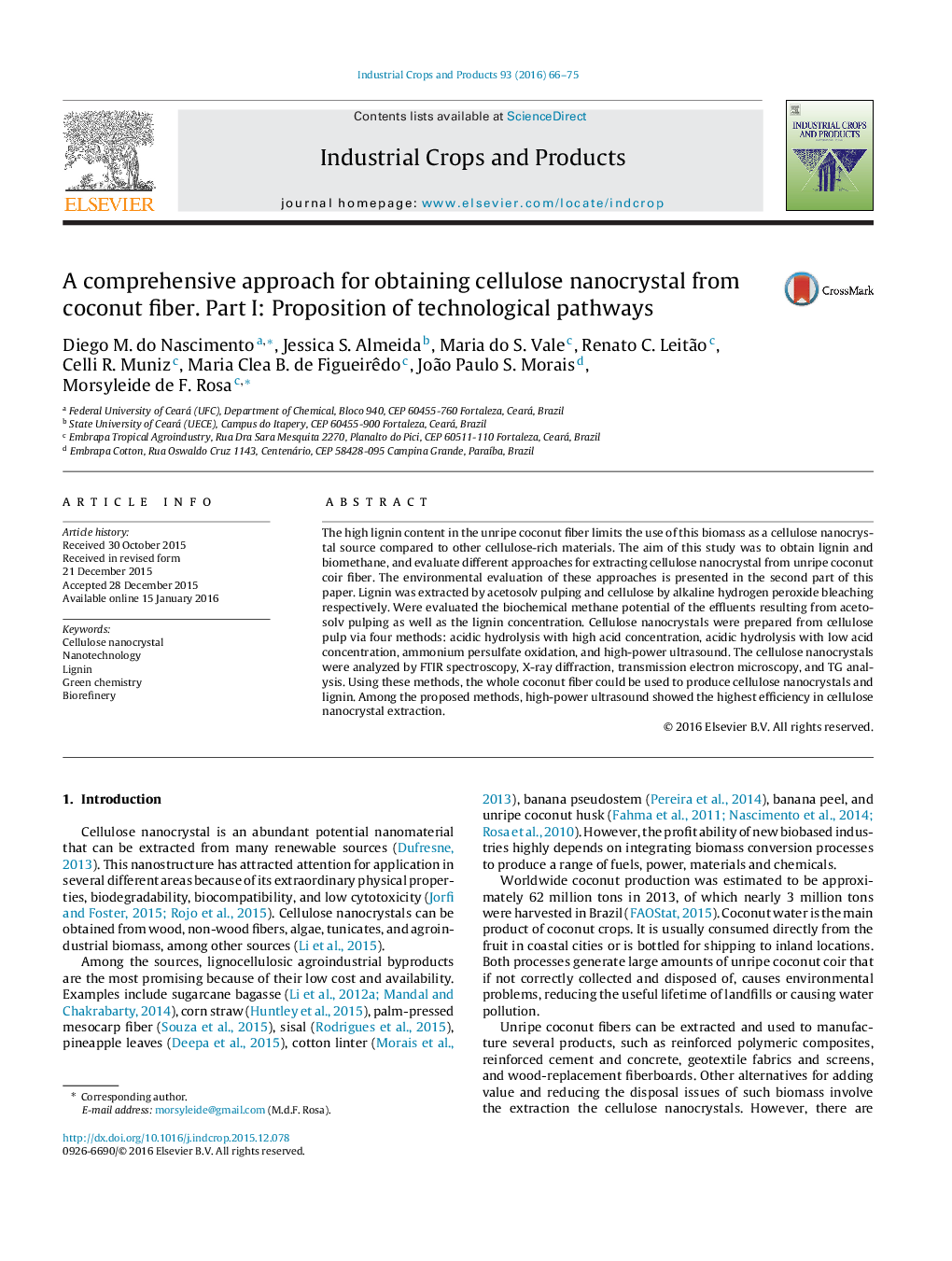| Article ID | Journal | Published Year | Pages | File Type |
|---|---|---|---|---|
| 4512056 | Industrial Crops and Products | 2016 | 10 Pages |
•We proposed a new approach to extract cellulose nanocrystals from coconut fiber, with high yield, purity, crystallinity index and thermal stability above 200 °C.•Coconut fiber was successfully fractionated into carbohydrate and lignin materials.•Among the evaluated methods, high-power ultrasound showed encouraging results for use in scaled up nanocellulose manufacture.
The high lignin content in the unripe coconut fiber limits the use of this biomass as a cellulose nanocrystal source compared to other cellulose-rich materials. The aim of this study was to obtain lignin and biomethane, and evaluate different approaches for extracting cellulose nanocrystal from unripe coconut coir fiber. The environmental evaluation of these approaches is presented in the second part of this paper. Lignin was extracted by acetosolv pulping and cellulose by alkaline hydrogen peroxide bleaching respectively. Were evaluated the biochemical methane potential of the effluents resulting from acetosolv pulping as well as the lignin concentration. Cellulose nanocrystals were prepared from cellulose pulp via four methods: acidic hydrolysis with high acid concentration, acidic hydrolysis with low acid concentration, ammonium persulfate oxidation, and high-power ultrasound. The cellulose nanocrystals were analyzed by FTIR spectroscopy, X-ray diffraction, transmission electron microscopy, and TG analysis. Using these methods, the whole coconut fiber could be used to produce cellulose nanocrystals and lignin. Among the proposed methods, high-power ultrasound showed the highest efficiency in cellulose nanocrystal extraction.
